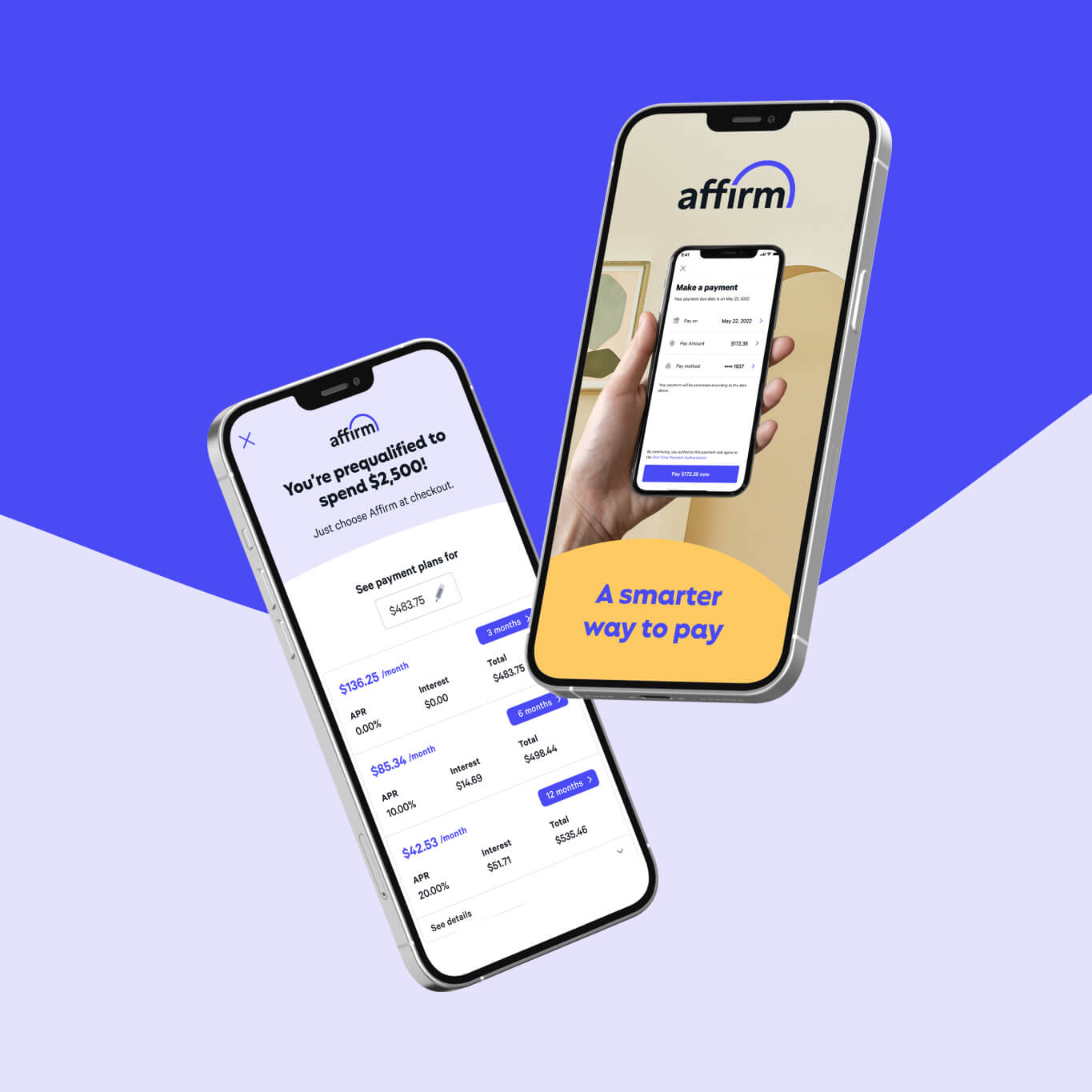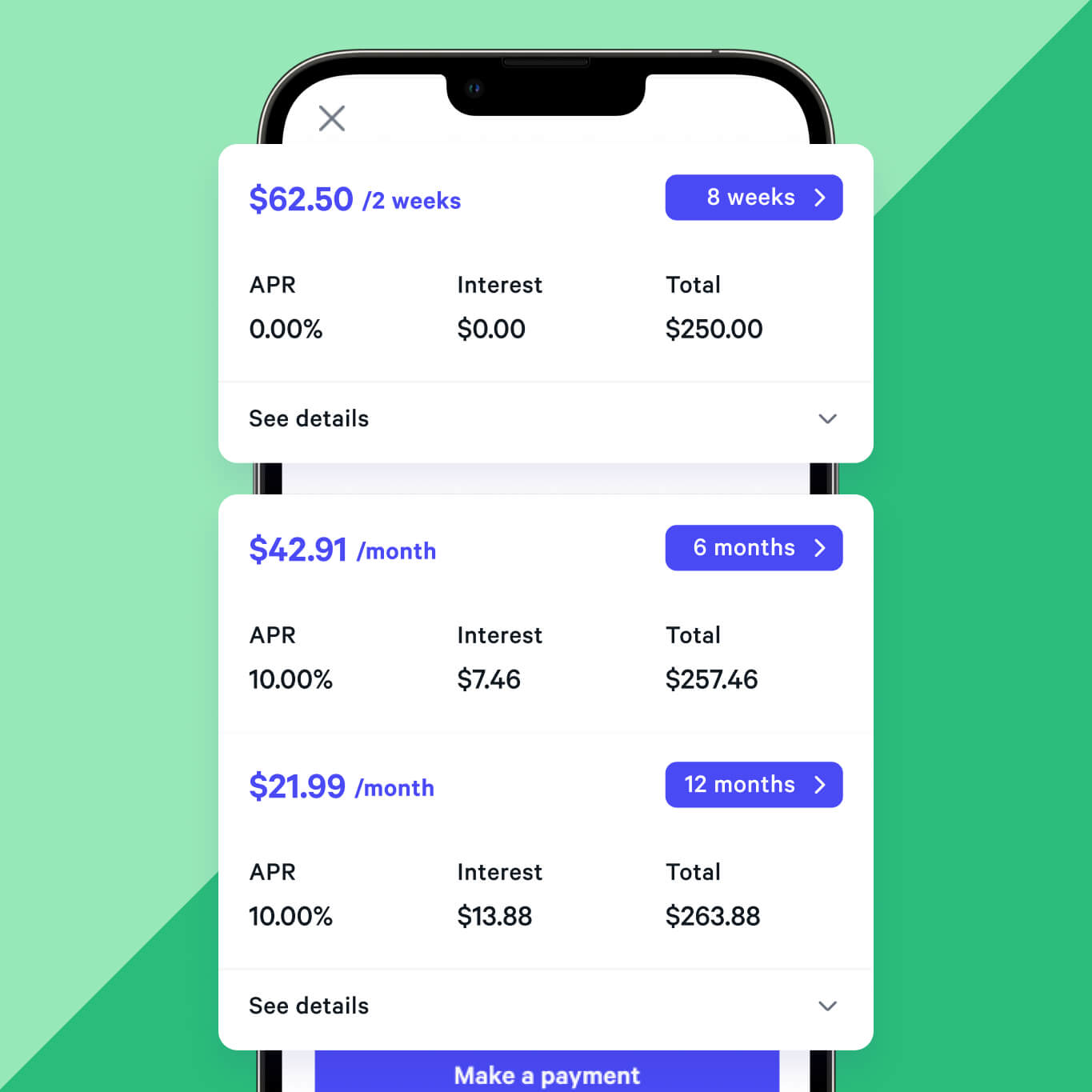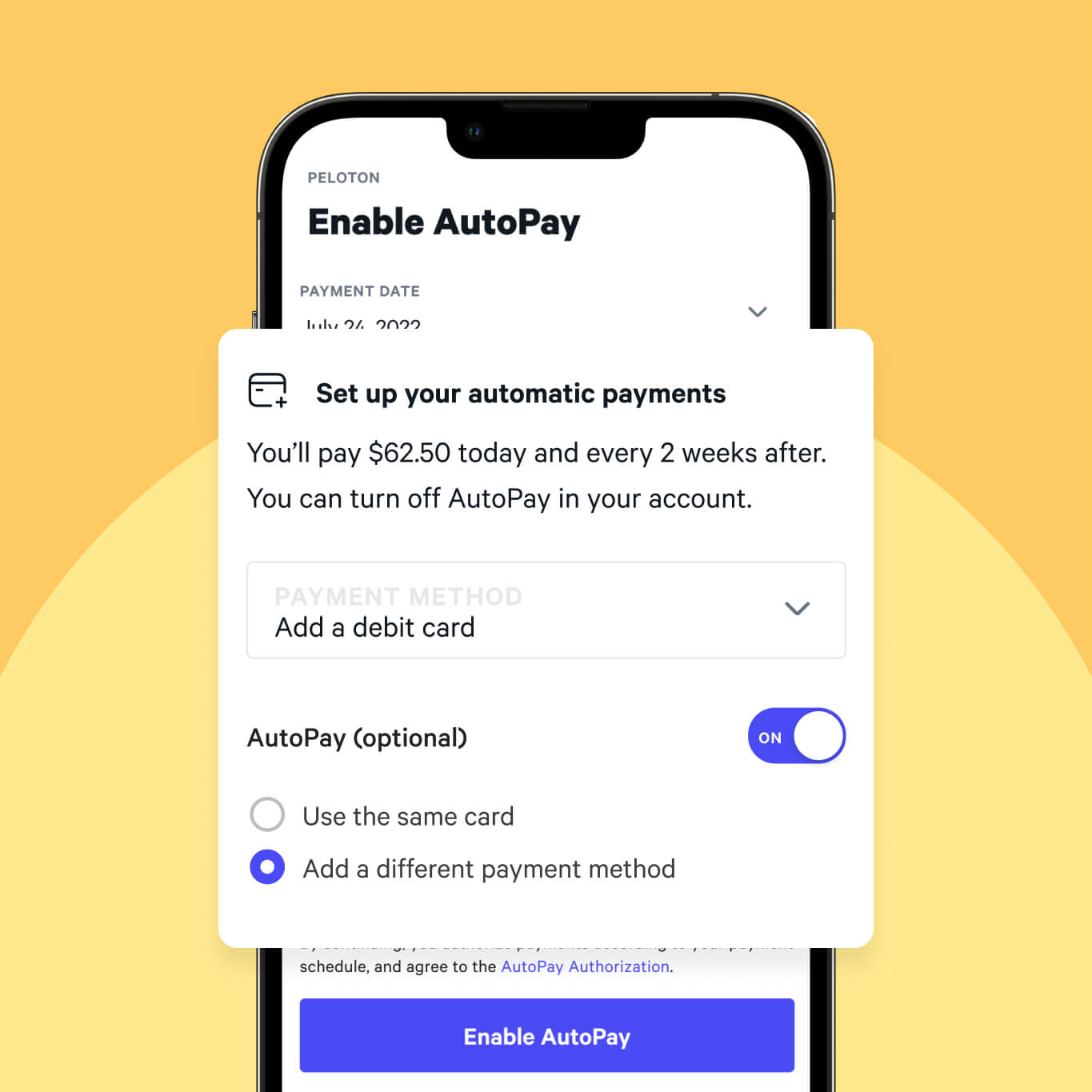Finance
Buy now, pay later without the fees
Affirm is a smarter way to pay over time. Shop and pay at your own pace with no hidden fees, so you can get the things you love without breaking your budget.
The choice is yours - Affirm Pay in 4: Make 4 interest-free payments every 2 weeks. Great for everyday purchases.
- No interest or fees
- No impact on your credit score
- Set up easy, automatic payments
Monthly Payments: Choose monthly installments. Perfect for bigger ticket items.
- No hidden fees—ever
- What you see is what you pay
- Set up easy, automatic payments
Pay over time for the things you love
Pay in 4 or make monthly payments for bigger ticket items. Rates from 0%-31.99% APR (subject to provincial regulatory limitations). See below for details.
No credit impact: Checking your eligibility is quick and easy—and it won’t ding your credit.
Get set up in minutes: Setting up Autopay is easy, so the only thing you’ll have to do is enjoy your purchase.
No hidden fees – ever: That’s why over 1 million shoppers trust Affirm.
How to buy with Affirm
STEP 1: Fill your cart
Shop at many of your favourite stores and select Affirm at checkout. Then enter a few details for an instant decision. We do a soft credit check when you apply for any Affirm payment plan. This won’t impact your credit score.

STEP 2: Choose how to pay
Select your payment plan, then confirm your loan. We’ll never charge more than you see up front.
For example: Let’s say you make a purchase of $1,000. Choose to make 4 biweekly, interest-free payments of $250 or pay over 3 ($333/mo), 6 ($166/mo) or 12 ($83/mo) months from 0-32% APR (subject to provincial regulatory limitations). Please see table for more details.

STEP 3: Make your payments
Manage your payments in the Affirm app or online, and set up AutoPay so you don’t miss a payment. But if you do, you’ll never pay any fees.

Use Affirm here—and there
Choose Affirm at checkout
It’s easy to pay over time. Just select Affirm at checkout when shopping at your favourite stores to see your payment options.
Shop online and in-store
Shop at thousands of stores you love—and thousands you haven’t discovered yet—online and in-store at participating retailers.
Download the app
Download the Affirm Canada app so you can manage and track all your purchases in one convenient place.
Need more info?
We’ve got you.











